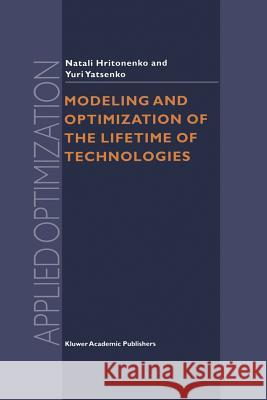Modeling and Optimization of the Lifetime of Technologies » książka
Modeling and Optimization of the Lifetime of Technologies
ISBN-13: 9781461334484 / Angielski / Miękka / 2011 / 252 str.
Modern economic growth is characterized by structural changes based on the introduction of new technologies into economics. The replacement and renova tion of technologies in industrial environments undergoing technical change is clearly one of the key aspects of economic development. The mathematical modeling of evolutionary economics under technical change (TC) has been rigorously considered by many authors during last decades. There is a wide variety of economic approaches and models describing different aspects of technical change. Among these are the models of embodied technical progress 19], 35], 70], 129], endogenous growth models 94], 102], the models of technological innovations 31], 32], 41], and others. The perspective self organization evolutionary approach is developed in 20], 38], 122], 123], 124], 126], which unites the aspects of diffusion of new technologies, technological and behavioral diversity of firms, learning mechanisms, age-dependent effects, and other important features of real-life economics. On the whole, an interest in evolutionary economics has brought considerable progress in the description and conceptualization of the sources, characteristics, direction and effects of technical change 125]. However, the modeling and control of technology lifetime under technical change has received rather little attention in mathematical economics in con trary to other aspects of technical progress. The lifetime of technologies has rarely been formally treated as a part of more general mathematical theory of economic dynamics. A problem which is still to be resolved consists in establishing the rational strategies of technologies' replacement under various assumptions on the behavior of technical change."











